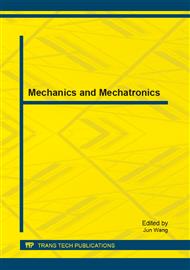p.366
p.370
p.376
p.381
p.388
p.395
p.401
p.407
p.412
Synthetic Topographical Characterization Analysis of Oxygen Free Copper Surface Prepared by UVG on the Basis of Wavelet
Abstract:
To study the synthetic topographical characterization of oxygen free copper surface created by ultrasonic vibration grinding(UVG) and carry out a detailed research to indicate the removal mechanisms of ultrasonic vibration grinding and its technological process of surface creating, this paper researches the surface signals obtained by contact profiler and utilizes a new wavelet based method. Through wavelet decomposition and re-construction of surface signal, surface features, such as form error, waviness and roughness are separated rationally. Synthetic topographical characterization of oxygen free copper surface prepared by ultrasonic vibration grinding has been summarized in detail.
Info:
Periodical:
Pages:
388-394
Citation:
Online since:
October 2013
Authors:
Keywords:
Price:
Сopyright:
© 2013 Trans Tech Publications Ltd. All Rights Reserved
Share:
Citation:


